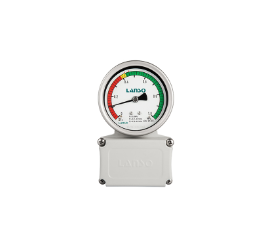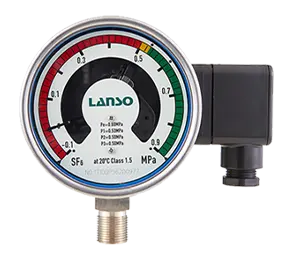The Working Principle of the SF6 Relay
The working principle of the sulfur hexafluoride (SF6) gas density relay is primarily based on the relationship between the pressure and density of SF6 gas, along with a temperature compensation mechanism. In a sealed container, the pressure of the SF6 gas changes with the temperature. However, as long as there is no leakage, its density (i.e., the mass per unit volume) remains constant.
Inside the density relay, there is a measurement system that typically includes an elastic metal bellows or diaphragm, which is connected to the SF6 gas in the equipment. When the pressure of the SF6 gas changes, this elastic structure deforms, thereby driving a pointer or sensor to measure the pressure.
Additionally, to correct the impact of temperature on the pressure measurement, the relay is equipped with a temperature compensation system. This system usually comprises a bimetallic strip or other temperature-sensitive components that can automatically adjust the measurement value based on the ambient temperature.
When the ambient temperature rises, although the pressure of the SF6 gas increases, the temperature compensation unit correspondingly decreases this measurement value to ensure that the indication value remains unchanged. Conversely, when the ambient temperature drops, although the pressure decreases, the compensation unit increases the measurement value. Thus, regardless of the environmental temperature fluctuation, the density relay can accurately provide the density value of the SF6 gas.

The Application and Importance of the SF6 Relay
SF6 gas, due to its excellent insulation and arc-extinguishing properties, is widely used in power systems, especially in crucial equipment such as high-voltage circuit breakers, medium-voltage switches, gas-insulated switchgear (GIS), high-voltage cables, transformers, and instrument transformers. The safe operation of these devices heavily depends on the purity and density of SF6 gas.
The SF6 relay acts as the "health monitor" for these devices, capable of real-time monitoring of the density changes of SF6 gas. Once the gas density falls below the safety threshold, the relay sends a signal or performs a locking operation, effectively preventing equipment failure and ensuring the stable operation of the power system.
In summary, the SF6 relay is an indispensable part of ensuring the safe operation of electrical equipment. Its precision and stability are crucial for fault prevention and system continuity. With continuous technological advancements, these relays will continue to evolve to serve modern power systems more efficiently.








